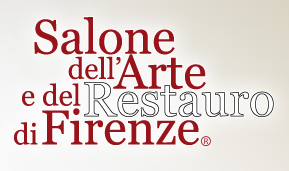Friday, November 9, 2012 hours 15:00
Rotelle di Modena, Weapons and Painters
 Soprintendente per i Beni Storici Artistici ed Etnoantropologici per le Province di Siena e Grosseto Soprintendente per i Beni Storici Artistici ed Etnoantropologici per le Province di Siena e Grosseto
Friday, November 9 from 3 p.m. to 4 p.m. - Sala Boito
Cavaniglia Pavilion, Fortezza da Basso, Florence
The Superintendence for the Historical, Artistic and Ethno-anthropological Heritage for the provinces of Siena and Grosseto identified among the works exhibited in the churches of Siena the peculiar group of dedicated weapons known as the weapons of Cristoforo Colombo in Santa Maria di Fontegiusta. As it has been demonstrated in a study presented in the form of an exhibition in Casa Siviero, organised in collaboration with the Region of Tuscany, it is instead a panoply belonged to a knight of the Order of Santo Stefano (Tuscany equestrian order founded by Cosimo I de 'Medici.) Probably the group is composed of weapons (a hat, a sword by side, the remains of a matchlock musket and a wheel) used in the Battle of Lepanto.
The wheel in particular, that shows clear signs of wear and damage caused by sword, which were certainly produced in a battle, deserves great attention. Archival records remember how the Grand Duke Ferdinando I, as Grand Master of the ' Order acquired in Modena some 'rotelle da galea', (circular shields specially designed for marine use).
A group of this type of wheels is still preserved in the armoury of the Council of Venice (one of them is easily recognizable, for it was decorated by the hand of the painter Niccolò dell'Abate Modena), while others are part of the group of pieces belonging to the collections of Este, now kept with other relics from different backgrounds in the armoury of Konopiste in Prague.
The restoration and the study of the piece, which involved also the Universities of Modena and Florence (which is expected to be able to give birth to a structured publication on the subject), provided useful and unpublished information which in part confirm what is written on the famous wheel of the Medusa by Caravaggio. Presenting these results will give us the opportunity to open a dialogue with the public, to better clarify, to those who are currently involved in sector researches, if exist particular expectations by art historians who work in this sector.
Coordinator :
Speakers : Mario Scalini, Lavinia Federici
web site |